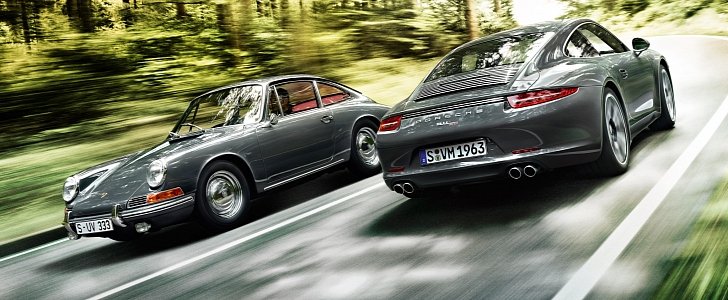Back when sport utility vehicle and crossover were words the automotive industry didn’t know, Porsche was focused on what it does best to this day: sports cars. Ferry Porsche came up with the 356, then it was the turn of his son Butzi to create the iconic model that put Porsche on the map.
Though he didn’t have the engineering skills of his father and grandfather, Ferdinand Alexander Porsche studied industrial design. And as a talented craftsman in the branch of shaping, Butzi had the biggest influence as far as the looks of the original 911 model were concerned. Be that as it may, the project design number for the first generation of the 911 was 901.
The Stuttgart-based automaker presented the prototype for the 901 at the 1963 Frankfurt Motor Show, and at the following year’s show, the 356 replacement was operational. It was there, in 1964, that the suits at Peugeot objected to the name, asserting ownership of the intellectual property in key European markets. It wasn’t the combination of nine, zero, and one that infuriated Peugeot, but the zero in the middle of the three-digit number.
This turn of events caught Porsche off-guard, the automaker producing lots of 9s, 0s, and 1s for the dashboard and rear end of the 901. So how did Porsche get out of this situation? As the man in the following video explains on behalf of Porsche, the higher-ups decided not to come up with a different name altogether for financial reasons, but make a change to the 901 handle.
And thus, the zero was changed to one, giving birth to the 911 and taking the sting out of Peugeot’s legal team. As if this battle of the egos wasn’t odd enough, the French automaker never used 901 for its vehicles, be it road-going or racing cars. The closest Peugeot came to the 901 name was the 905, a sports prototype that won the 24 Hours of Le Mans in 1992 and 1993.
The Stuttgart-based automaker presented the prototype for the 901 at the 1963 Frankfurt Motor Show, and at the following year’s show, the 356 replacement was operational. It was there, in 1964, that the suits at Peugeot objected to the name, asserting ownership of the intellectual property in key European markets. It wasn’t the combination of nine, zero, and one that infuriated Peugeot, but the zero in the middle of the three-digit number.
This turn of events caught Porsche off-guard, the automaker producing lots of 9s, 0s, and 1s for the dashboard and rear end of the 901. So how did Porsche get out of this situation? As the man in the following video explains on behalf of Porsche, the higher-ups decided not to come up with a different name altogether for financial reasons, but make a change to the 901 handle.
And thus, the zero was changed to one, giving birth to the 911 and taking the sting out of Peugeot’s legal team. As if this battle of the egos wasn’t odd enough, the French automaker never used 901 for its vehicles, be it road-going or racing cars. The closest Peugeot came to the 901 name was the 905, a sports prototype that won the 24 Hours of Le Mans in 1992 and 1993.


